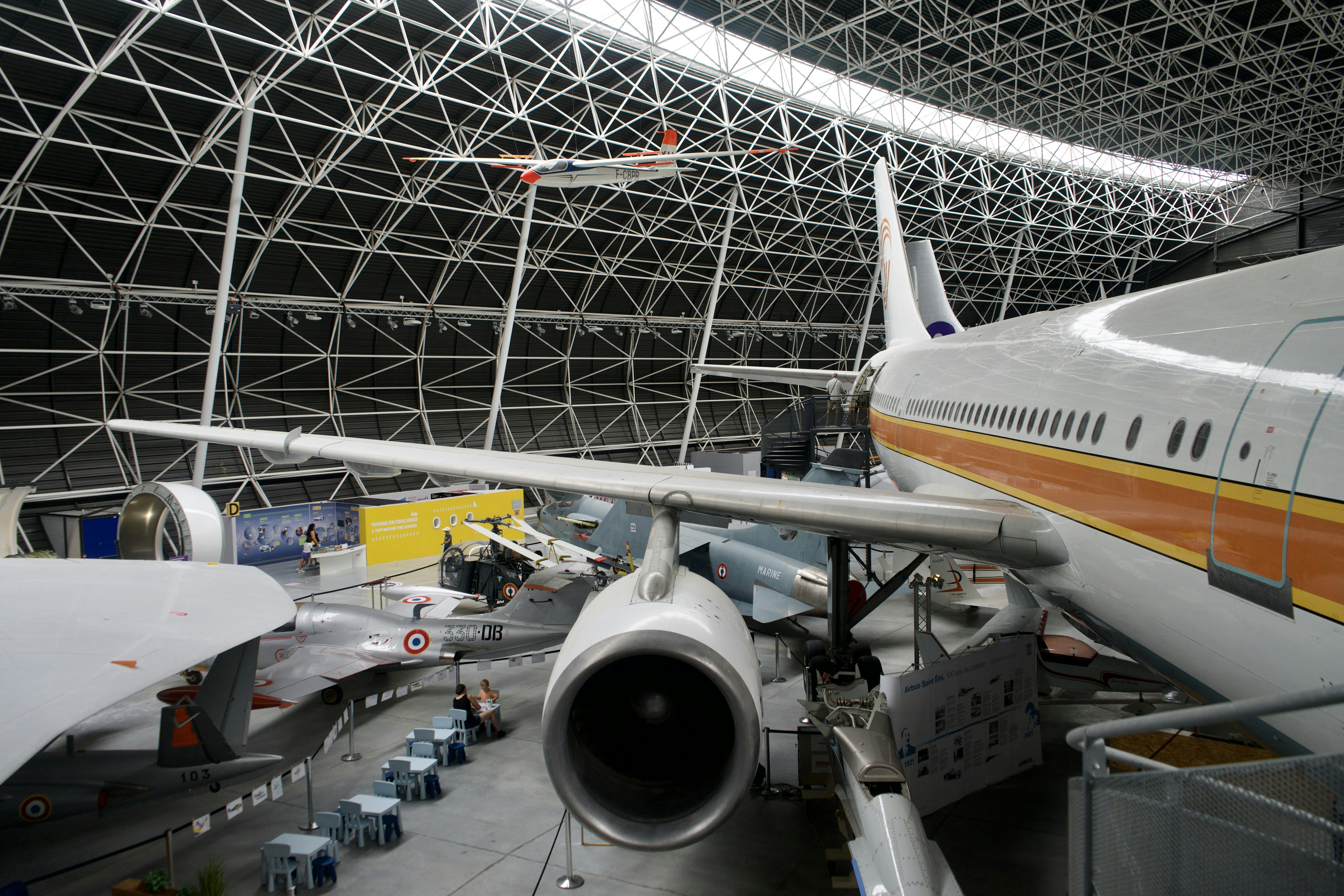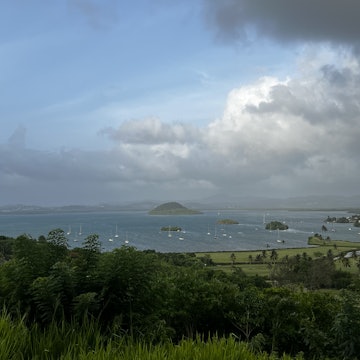

When you get to Toulouse, start with a wander through the atmospheric Capitole de Toulouse. Semmick Photo/Shutterstock
The fourth-largest city in France may lie in the country’s sprawling southwest, between a bend in the Garonne River and mighty Canal du Midi.
But Toulouse has never been shy in making itself heard.
A UNESCO-listed “city of music” since 2023, this sun-soaked metropolis comes with a bewitching sound cloud. Think the peel of old-town church bells, the roar of planes, the rhymes of busking rappers and hip-hop artists, the splashing of canal boats passing through a lock, the steamy hiss of a mechanical Minotaur and the clink of pastis glasses on a hot summer’s day.
A rhythmic ebb and flow has always punctuated urban life here. Medieval pilgrims making their way on foot to Santiago de Compostela in Spain passed through here, venerating relics and the tomb of Toulouse’s 4th-century bishop-turned-saint at Basilique St-Sernin. Aviation junkies have gravitated to Toulouse since the 1960s, when Airbus set up shop on the city’s outskirts. Music buffs rave about the town’s repertoire of star-drawing festivals. Toulouse’s university, serving students since 1229, is among Europe’s oldest.
For first-timers and returning visitors alike, this dynamic student city has something fun (and sometimes free) to offer every month of the year. In summer, for example, boating (on the Canal du Midi) and beach life (on the banks of the Garonne) is as fundamental to the urban psyche as art, culture and eating exceedingly well.
Not sure where to start? These nine incontournables (unmissable things to see and do) will help you get going.
1. Embrace the French art of flânerie in the Old Town
The essential way to soak up Old Toulouse is on foot. View it across the water from 17th-century stone bridge Pont Neuf before diving into the picture-postcard tangle of quaint coral-brick shop fronts, elegant hôtels particuliers (private mansions), cute boutiques and charming cafes where you can sit down for a chocolatine (the local version of the classic French pain au chocolat). From Place du Capitole, a neoclassical masterpiece of a central square, wind along mellow backstreets to medieval Couvent des Jacobins, with its tranquil cloister garden. Follow your nose to the striking, ever-so-slightly-leaning “wedding cake” bell tower of Romanesque Basilique St-Sernin. Unearth Roman Toulouse at the honey-brick Musée St-Raymond, and try to blend in with some of the city’s 130,000-odd students hanging out in the trio of gardens converging in Jardin du Grand-Rond.
Local tip: Toulouse is a place of places. Hit Place St-Georges and Place de la Trinité for buzzy cafe life, Place St-Pierre for alfresco dining and street buskers, and bourgeois Place St-Etienne for chic shopping and art galleries.

2. Shop for local produce and enjoy a traditional cassoulet for lunch
In France’s foodie Southwest, the epicurean stakes are high. Accordingly, stalls at Toulouse’s Marché Victor Hugo, the country’s oldest covered market, all but heave with seasonal produce. Go for a wander to learn what’s in season in the rich and fertile region surrounding Toulouse – think artichokes and pink garlic in spring, strawberries in summer, and cabbage and root vegetables for a hearty garbure (smokey pork stew) in winter.
Duck upstairs to one of five tiny eateries, and sit down to a hearty, good-value lunch of local fare with ravenous traders at a wooden table. The hectic market vibe coupled with a bowl of cassoulet – Toulouse’s gut-busting stew of simmering beans, duck confit and Toulouse pork sausage in a cassole (earthenware pot) – at Le Magret is unforgettable.
Or go gourmet in town at Le Genty Magre, where chefs bagged gold in Toulouse’s 2023 cassoulet championships. Can’t get enough of the velvety stew? Hop on a regional train to the small town of Castelnaudry (40 minutes), where Chez Marty bagged the 2024 title.
Planning tip: Reserve a spot on a 4-hour walking tour of the city with Toulouse Gourmet Tours to savor tasty morsels prepared by chef Alejandro in his “mobile kitchen” – ie the back of his cargo bike.
3. Venture into the violet scene
Violets have been the city’s emblematic bloom since 1850 when, so the story goes, a soldier in Napoleon III’s army brought a posy of violets home from Parma, Italy, for his Toulousaine lover. Just like that, local flower farms began cultivating the purple flowers, unusually seedless (thus only produced from cuttings) and flowering in winter (October to March). In the early 20th century, confectioners soaked the petals – the Toulouse variety has 30 to 50 – in sweet syrup to create candied violets. Today, more than 300 varieties grow in greenhouses in Toulouse’s Conservatoire Nationale de la Violette (National Violet Conservatory).
Each year on the first weekend in February, farmers, florists and artisans gather on Place du Capitole to showcase their floral wares during Toulouse’s Fête de la Violette (Violet Festival). Year-round, you can devour violet-flavored ice cream by artisan glacier Toulouse Moustache on Place St-Pierre, or a Paris-Toulouse cake oozing violet-flavored whipped cream from Boulangerie B.Authié on Place Victor Hugo.
Local tip: Join locals early in the evening for an aperitif on a cafe terrasse: order a local kir de Toulouse (white wine with a dash of violet liqueur).

4. Take a float down the river or canal
Whether you wish to be awed by the feats of engineering behind the 17th-century Canal du Midi or simply seeking a breezy respite from city life, taking to Toulouse’s duo of leafy waterways is non-negotiable. See the sweep of neoclassical architecture from an alternative perspective aboard a sightseeing boat cruise along the Garonne River with Les Bateaux Toulousains. Or captain your own little electric boat with royal-blue sun awning from Les Caboteurs, on the Garonne’s left bank.
Pop out of Toulouse’s central train station and eyeball one of 77 locks that stitch together the extraordinary Canal du Midi, constructed during the reign of Louis XIV to link the Mediterranean with the Atlantic. Cruising this majestic waterway is the epitome of French enchantment.
Detour: No license is required to rent a canal boat from Locaboat in Négra, 18 miles south of Toulouse.

5. Learn about Toulouse’s soaring contributions to aviation history
Toulouse’s aviation heritage is impressive. This is where the first aircraft were built in 1918, where Concorde made its first test flight in 1969 and where every Airbus model has been crafted since the prototype Airbus A300 took flight in 1974. You can learn just how Toulouse became a hub of Europe’s aeronautical and space industries, then cut your teeth on immersive high-tech stuff like flying an A380 simulator or rocketing into space, at a trio of spectacular museums just out of town: Aeroscopia (which exhibits commercial airliners, including two Concordes), L’Envol des Pionniers (on postal aviation history) and Cité de l’Espace (space). The pièce de resistance? Airbus factory tours, with a peek at the A321 or A350 XWB assembly lines.
Planning tip: Book Aeroscopia and Airbus tours well in advance; weekends are busiest but best. Allow a full day to explore thoroughly.
6. Admire art at an eclectic mix of venues
Taking in the peerless collection of paintings, sculptures, objets d’art and graphic art from the 15th century to WWII at Fondation Bemberg is as much about spectacular Renaissance architecture as art, for the blockbuster art museum fills a sumptuous hôtel particulier built in 1562 for a rich merchant. The city’s other traditional fine arts museum, Musée des Augustins, which occupies a former monastery, will reopen in 2025 after years of renovation.
Be sure to check out what’s on at Les Abattoirs, a dynamic cultural center and contemporary-art gallery inside the former municipal slaughterhouse. Remember to look outside, too: a family-friendly trail of 16 intriguing sculptures leads from the central courtyard to the river.
Planning tip: Admission to Les Abattoirs is covered by the Pass Tourisme, a discount card issued by the tourist office. Its €26 price includes admission to several museums and a free city tour.

7. Pedal to Halle de la Machine to ride a giant Minotaur
It doesn’t get zanier than the Herculean creatures at Halle de la Machine, which delight visitors at a site that was once an airport runway. Hop atop a 14m(46ft)-tall mechanical Minotaur crafted from wood and steel, scare yourself silly with a giant mechanical spider in motion, or twirl on a giant buffalo or imaginary insect on an old-school carousel. Inside the actual hangar, dozens more mechanical creations captivate all ages.
Year-round, watch for occasional shows and “operas” – all absolutely phenomenal – directed by street theater company La Machine. These productions pair the 50-odd mechanical creations at Halle de la Machine with a classical symphonic orchestra, DJ set, live band…just about any and every type of music.
Planning tip: It should take about 25 minutes by bike to cover the 4 miles from Place du Capitole to Halle de la Machine, following mainly Canal du Midi towpaths. The city has 370-odd miles of cycling lanes and some 200 miles of signposted itineraries in all. Unlock a set of shared wheels from one of 400 VélôToulouse stands.

8. Embrace urban street culture at a music festival
Tap into Toulouse’s music heritage – a brilliant cornucopia of sounds – with jazz at Le Taquin, classical music and opera at Théâtre du Capitole or a live gig at Le Saint des Seins on bar-busy Place St-Pierre. And expect plenty of alfresco sets, too: Toulouse has earned its “city of music” designation largely through its clutch of world-class music festivals, which take place in the warmer months. Be sure to reserve tickets well in advance for August’s Rose Festival, a celebration of rap and young regional talent initiated by the Toulousain brothers and hip-hop duo Bigflo & Oli.
Planning tip: Mediterranean music fest Rio Loco is the other world-renowned event that’s well worth planning a Toulouse trip around.
9. Play ball at Toulouse Plages
You don’t need to head to the sea to hit the beach in summer. Across the water from Toulouse’s Old Town, riverside park Prairie des Filtres sprouts deck chairs, slacklines, spikeball, gravel pétanque pitches and sandy beach volleyball and badminton courts during Toulouse Plages (late July through late August). There are games galore to entertain, kayaks to paddle near Pont Neuf, and outdoor concerts come dusk. Bon été!
















